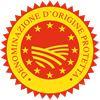Description
Arancia di Ribera PDO is a fresh citrus fruit deriving from the following orange varieties: Brasiliano (including the Comune and Risanato clones); Washington Navel (including the Comune, Risanato and 3033 clones) and Navelina (including the Comune, Risanata and ISA 315 clones).
Production Area
The production area of Arancia di Ribera PDO is on the banks and slopes alongside the Verdura, Magazzolo, Platani and Carboj rivers, and incorporates 13 municipal areas in the Province of Agrigento and one in the Province of Palermo, in the Sicily region.
Production Method
Arancia di Ribera PDO is produced either in new citrus fruit orchards or from trees obtained through the varietal reconversion of already existing citrus fruit orchards. In the first case, young nursery plants (one or two years old) are planted in winter, between December and the end of March. In spring a new grafting can be made on healthy and previously pruned orange trees. The plants can be managed traditionally, biologically or be integrated. The first variety to be harvested, beginning in early November and ending in February, is the Navelina. For the Brasiliano and Washington Navel varieties, harvesting begins during the first ten days of December and lasts until the end of May. The fruit are hand-picked with the help of secateurs.
Appearance and Flavour
Arancia di Ribera PDO has a spherical-elliptic shape and can be easily recognised by its internal navel, which is more pronounced in the Brasiliano and Washington Navel varieties. The peel is deep orange, tending to turn reddish towards the end of the winter. The pulp is pale yellow and sweet, with a particularly delicate consistency that melts in the mouth, leaving very little membrane residue.
History
Several historic documents recount how excellent oranges were being produced in the valley of the River Verdura at the beginning of the 19th century. The same documents describe the land as being extremely rich and crossed by fresh water rivers, which made it possible to produce fruit that could be exported to America. The product started being referred to as Arancia di Ribera in 1950, and since 1966, it has been the protagonist of the Market Fair held in the area.
Gastronomy
Arancia di Ribera PDO should be stored in a cool, dry place, away from heat sources. It is an excellent fresh fruit and makes a delicious fresh juice due to its extreme sweetness and gustative qualities. The peel is ideal for making candied fruit. Thanks to its moderate acidity and being easily digestible, Arancia di Ribera PDO can also be eaten in the evening. It is a versatile fruit in cooking and is used in numerous savoury and sweet dishes, both traditional and innovative, such as oranges in tuna sauce, Garganelli pasta with orange, orange duck with Trapanese couscous, orange Fior di Latte and Aranzada.
Marketing
The product is marketed as Arancia di Ribera PDO, in the Brasiliano, Washington Navel and Navelina varieties. It can be packed in net bags weighing no more 5 kg; in wood, plastic or cardboard boxes and/or trays with a maximum weight of 25 kg; in alveolar bins with a maximum weight of 40 kg. Extra and First are the only permitted categories. The week the fruit were harvested can be specified on the label.
Distinctive Features
Arancia di Ribera PDO doesn’t undergo any form of chemical treatment after harvesting and wax isn’t used: the peel is simply washed with potable water, allowing the whole fruit to be used for culinary purposes.


































